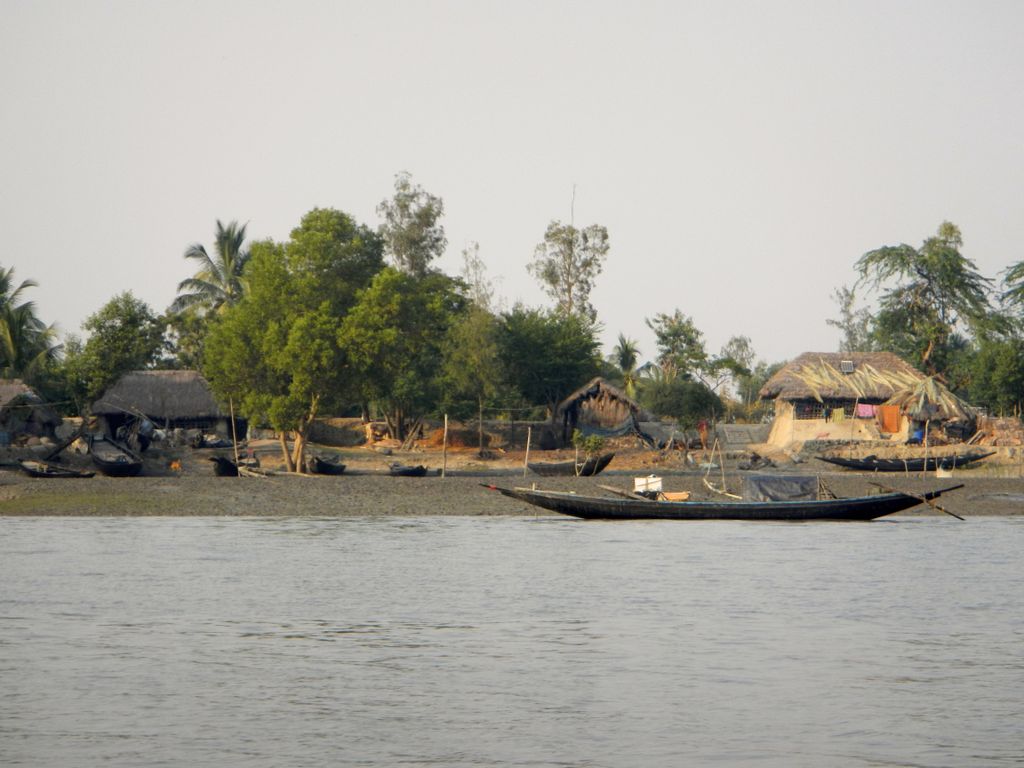
It’s not easy to stare into the eyes of a dying man. But that is what David Michaels, the head of the Occupational Safety and Health Administration (OSHA), wants you to do.
A video called, “Deadly Dust,” featured on OSHA’s website, introduces Bill Ellis, a retired painter and sandblaster. After years of exposure to fine particles of blasted rock, he developed a respiratory disease called silicosis and died, leaving behind his wife, children, and grandchildren. Ellis’s final months were painful. For a silicosis patient, just drawing breath is an ordeal—like sucking air through a straw.
Thousands of laborers are exposed to the tiny stone particles, called silica, that killed Ellis. Any time workers blast sandstone, saw concrete, or cut brick, that dust is in the air. Because of the broad danger and the availability of relatively inexpensive protective gear, OSHA has released proposed rules updating worker safety standards for silica. The current rules have not been revised in over forty years.
The proposal would lower the permissible exposure limit (PEL) of silica dust from 100-250 micrograms per cubic meter of air to 50 micrograms. The rule could save nearly 700 lives and prevent 1,600 new cases of silicosis each year. After including costs of implementation, average net benefits are estimated at $1.8 to $7.5 billion per year.
The potential benefits of the rule are truly remarkable. The result seems like a dream situation, where a government agency can protect people and save money. Isn’t that what regulatory agencies are supposed to do?
Full textEver wonder how Professor Tom McGarity knows about all those delays in regulatory review? Or how Professor Lisa Heinzerling learns about food safety regulations that the White House appears to be burying?
Well, now you too can be an OIRA ninja. In President Obama’s first term, the White House introduced an interactive Web portal stocked with charts and figures to give you better information about the President’s centralized system of regulatory review. (Last summer I referred to OIRA as “the ganglia of the president’s rulemaking brain,” which creeped out some readers, but I’m sticking with it.)
There are only two rules for you. First, don’t be afraid to snoop around; sometimes the most useful stuff is found three or four levels down. Second, don’t fall in love; OIRA’s slick Web site is a fresh breeze for advocates of government transparency. But there’s still a lot missing. Remember the line about statistics and swimsuits: what they reveal is interesting, but what they conceal is vital.
Let’s start with the homepage of the White House Office of Information and Regulatory Affairs, the one with the photo of President Obama and former regulatory czar Cass Sunstein gazing admiringly into each other’s eyes. Just below the photo is a link to the “Regulatory Dashboard,” your entrée into the President’s regulatory control room.
Full textEverything’s upside down. Last week a Democratic president urged a military strike in the Middle East while Republicans dithered about quagmires. Tomorrow, a subpanel of the House Energy and Commerce Committee will launch its first climate change hearing in years and hardly any Obama administration official is willing to show up. Representative Ed Whitfield (R-Ky), who chairs the Committee’s Energy and Power subpanel, says the committee requested presentations from 13 federal agencies. But as of this post only EPA Administrator Gina McCarthy and Energy Secretary Ernest Moniz have promised to testify.
Normally, of course, you can’t stop us progressives from talking about climate change. We talk smack about Canadian tar sands, press universities to rethink their carbon investments, and name hurricanes after Marco Rubio. (The last was really funny, but perhaps not fair.) The President’s all in too. Last August, when he denounced, “the limitless dumping of carbon pollution from our power plants,” I couldn’t get enough.
So, what leaves Whitfield singing, “Can I Get A Witness?”
The thing to know is that tomorrow’s major hearing on climate change is not really a major hearing. It is not even one of those Potemkin major hearings where the participants sit like plyboard cut-outs and pretend to be interested in the topic.
No, this is an ambush. And even the Democrats have figured it out.
So, please, do not expect the panel’s vice chairman, Representative Steve Scalise (R-La) to express concern that because of warming and subsidence, Louisiana is experiencing the fastest rate of sea-level rise on the planet. And, no, Representative Cory Gardner (R-Co) is not going to waste time explaining that his state’s water conservation board worries that Colorado may soon lack water to support its cities, farms, and fish runs. Nor will Representative John Barrow (D-Ga) complain that the Peach State lacks any plan to prepare for such climate shockers as heat waves, vector-borne illness, and increased smog?
You see, the real concern of those in charge of this hearing is not that the climate is changing, but that the government might try to do something about it.
Thus Chairman Whitfield’s invitation letter requests that witnesses come prepared to discuss all upcoming “regulations or guidelines” that would make it harder to pump greenhouse gases into the air, and explain how any “agency funds” have been used to reduce or prepare for climate impacts. As Whitfield explained later to press: "It’s important that we be aware of what unilateral action through regulation and executive orders the administration is looking at.”
One of those “unilateral actions” that Whitfield, no doubt, has in mind is EPA’s upcoming proposal to limit greenhouse gas emissions from new fossil fuel power plants. Let’s ignore for the moment how a rule embraced by an elected president, impelled by a Supreme Court decision (Massachusetts v. EPA), and authorized by an act of Congress (the Clean Air Act) can be characterized as “unilateral.” I need to save something for my law students’ final exam.
The coal industry is extremely worried about this because coal is exactly the fossil fuel that President Obama had in mind when he complained about all that “limitless dumping” from “power plants.” And some Beltway experts are predicting that EPA’s new rules may require new coal-fired power plants to adopt expensive technologies like “carbon capture and storage” (CCS) in order to qualify for permits.
Fancy this, for years the coal industry has been telling us about all its clean coal technology. They said over, and over again that clean coal technology allowed power plants to capture greenhouse gases and pump them underground. We were assured such advancements “aren’t just predictions,” but reality.
Remember the image of the orange extension cord plugged into that polished lump of coal--the one paraded during NASCAR rallies and in between segments of Sunday morning political talk shows?
Remember those television ads with a rainbow coalition of goggled lab and plant workers imploring you to “Believe!”? (Shout it with me: “BELIEVE!”)
And now they say they don’t have it? Let’s have a hearing on that!
Full text
The Senate's confirmation of Gina McCarthy as head of the Environmental Protection Agency is a welcome development and a signal that Congress and the President are willing to get serious about the Agency's role in protecting the health of all Americans and the affects of climate change on the environment. It won't be easy. Lawmakers seem divided on nearly every issue in this debate. In the past EPA's efforts to protect the environment and public health and safety have sometimes been delayed by the White House's own Office of Information and Regulatory Affairs (OIRA). Cutting through such bureaucracy should be on the short list of the new administrator's priorities. Climate change knows no political ideology and it follows its own timeline. Administrator McCarthy is well equipped to meet the challenges we face. We are lucky to have her fighting for us all.
Full textLate Tuesday afternoon, Senators Sheldon Whitehouse (D-RI), Tom Harkin (D-IA), Ben Cardin (D-MD), and Richard Blumenthal (D-CT) and U.S. Representatives Henry A. Waxman (D-CA) and Ed Markey (D-MA) sent a letter to White House Office of Management and Budget Director Sylvia Burwell urging her to take "prompt action" to implement rules and regulations held up at the Office of Information and Regulatory Affairs (OIRA). The letter notes that under Executive Order 12866, OIRA reviews of agency draft rules must be completed within 90 days, and that 14 of the 20 EPA rules currently undergoing OIRA review have been languishing for more than 90 days, 13 of them for more than a year.
In a statement this morning, CPR's Robert Verchick, a former EPA official, applauded the Members of Congress for taking on the issue. He said:
Congressional deadlock is often cited as the primary reason for government inaction, but as these key Members of Congress note in their letter, the President's own White House staff is delaying rules that could improve the quality of life for millions of Americans with the stroke of a pen.
EPA's proposed "Chemicals of Concern List rule" has been languishing at OIRA for more than three years, that for a proposal which would provide for nothing more than the simple disclosure of such potentially harmful chemicals, as phthalates, PBDEs, and BPA. Consumers and taxpayers deserve to know which cancer-causing and endocrine-disrupting chemicals are in the products they buy and use. But the President's OIRA is sitting on the rule. Action on this and the other rules bottled up at OIRA is long overdue. The Senators' and Representatives' letter reflects an appropriate sense of urgency.
Verchick was the Deputy Associate Administrator for Policy at the EPA during the first Obama Administration.
CPR Member Scholars have published extensively on the problems at OIRA. Read more on our Eye on OIRA page.
Full text The Ganges River begins at the foot of the Gangotri Glacier in the Himalayas and culminates at the Sundarbans Delta, a massive sprawl of swamps, lakes, and scores of islands. (Find an earlier post on the Ganges here.) It’s the largest river delta in the world—home to endangered Bengal tigers, miles of mangroves, and nearly 12 million people (4.5 million on the Indian side and 7.5 million on the Bangladeshi side).
The Ganges River begins at the foot of the Gangotri Glacier in the Himalayas and culminates at the Sundarbans Delta, a massive sprawl of swamps, lakes, and scores of islands. (Find an earlier post on the Ganges here.) It’s the largest river delta in the world—home to endangered Bengal tigers, miles of mangroves, and nearly 12 million people (4.5 million on the Indian side and 7.5 million on the Bangladeshi side).
A student of the Mississippi River Delta, I had long wanted to visit the Sundarban Islands. So after giving a series of lectures in Kolkata, I accepted an invitation to visit some of the islands on a medical boat, operated by the Southern Health Improvement Samity, an organization in West Bengal that delivers health-care services to island villagers.
The experience was one of the high points of my semester sabbatical, which has now drawn to a close. The people were lovely. I chatted with a group of young girls about their new school building, which doubles as a safe house in times of flood. I learned about off-the-grid power from a farmer who had recently installed solar panels on the thatch of his mud hut. A local activist taught me about a program that employs women to grow mangrove saplings and replant them on fragile shores. And the lush forests were idyllic (once you looked past the plastic netting designed to keep the tigers in).
Full textIn October, I wrote about the city of Surat, the diamond-polishing capital of India, and its battle against climate change. Recently I had the chance to visit another municipality working on adaptation, a place known more for its postage stamp farms and wandering livestock than jewelry and textiles. It’s called Gorakhpur, and is located in the flood-prone state of Uttar Pradesh, near the India-Nepal border.
 I first visited Gorakhpur nearly 25 years ago--when I was a long-haired backpacker and Gorakhpur was a muddy stop on the way to Kathmandu. Some things there haven’t changed. The streets are still muddy. Tea stalls and tarpaulin tents still line the streets, illuminated by the blue flames of cook stoves. At my business hotel, electricity was as unreliable as ever, and the telephones still crackled and hissed. Each morning, I would greet a dozen or so cows grazing on a hillock of garbage outside the hotel gate. (The city still has no regular solid waste collection).
I first visited Gorakhpur nearly 25 years ago--when I was a long-haired backpacker and Gorakhpur was a muddy stop on the way to Kathmandu. Some things there haven’t changed. The streets are still muddy. Tea stalls and tarpaulin tents still line the streets, illuminated by the blue flames of cook stoves. At my business hotel, electricity was as unreliable as ever, and the telephones still crackled and hissed. Each morning, I would greet a dozen or so cows grazing on a hillock of garbage outside the hotel gate. (The city still has no regular solid waste collection).
But Gorakhpur has also changed in important ways. The city has over four hundred thousand people, with millions more in the surrounding district. There are malls, cineplexes, fast-food joints, and pizzerias! What began as a small urban core has spread erratically, encroaching upon lakes, marshes, and scores of farm villages—all held together by a hectic flow of traffic and a mighty, tea-stained dome of hydrocarbons.
Full textProperty lawyers in the United States love the Public Trust Doctrine (PTD). There’s such a rich history. The doctrine, which holds that important resources must be held “in trust” for public use, originated in Roman law. Centuries later it was forced on King John through the Magna Carta. During America’s industrial revolution, our Supreme Court invoked the doctrine to defend Chicago’s shoreline from hungry rail barons (the case is called Illinois Central Railroad), and we’ve had it ever since.
 The PTD fascinates us at CPR too: we see it as a potentially powerful way to protect water resources in the United States. (Visit our Public Trust Doctrine page.) But some of the most interesting and expansive uses of the PTD are taking place on the other side of the world—in India. To learn more about those developments, I turned to Shibani Ghosh, a Research Associate at the Centre for Policy Research, where I am visiting for the semester. Ms. Ghosh is also a public interest lawyer and a visiting member of the faculty at TERI University in New Delhi. I asked Ms. Ghosh to help me understand how the PTD is used in Indian law. Our conversation—which touched on public participation, climate adaptation, and India’s 2G network—is set forth below.
The PTD fascinates us at CPR too: we see it as a potentially powerful way to protect water resources in the United States. (Visit our Public Trust Doctrine page.) But some of the most interesting and expansive uses of the PTD are taking place on the other side of the world—in India. To learn more about those developments, I turned to Shibani Ghosh, a Research Associate at the Centre for Policy Research, where I am visiting for the semester. Ms. Ghosh is also a public interest lawyer and a visiting member of the faculty at TERI University in New Delhi. I asked Ms. Ghosh to help me understand how the PTD is used in Indian law. Our conversation—which touched on public participation, climate adaptation, and India’s 2G network—is set forth below.
RV: How did the PTD makes its way to India?
SG: In the 1980s and ‘90s, the Supreme Court of India played a very active role in promoting rights-based litigation. Several landmark cases which have contributed to the growth of Indian environmental jurisprudence were decided during that time. One such case was MC Mehta v Kamal Nath. The issue before the Court in this case was the legality of the government’s decision to regularize encroachment of reserved forest land by a private hotel in the state of Himachal Pradesh. The hotel had also tried to change the course of the river Beas on the banks of which the hotel was situated, so as to prevent instances of flooding and loss of property. Before the Supreme Court, the matter was argued against the hotel by MC Mehta, India’s leading environmental lawyer and the judgment was written by Justice Kuldip Singh, arguably the country’s foremost “green judge.”
Full text Last weekend my son took part in a set of Boy Scout activities with his local Delhi scout troop. On the grounds of the former residence of the U.S. ambassador, the boys prepared a kabob lunch, practiced fire making, and even built a Medieval-style trebuchet. But all I could think about were the little striped mosquitoes that seemed to follow the kids everywhere—Asian Tiger mosquitoes, to be exact, the kind that carry dengue fever.
Last weekend my son took part in a set of Boy Scout activities with his local Delhi scout troop. On the grounds of the former residence of the U.S. ambassador, the boys prepared a kabob lunch, practiced fire making, and even built a Medieval-style trebuchet. But all I could think about were the little striped mosquitoes that seemed to follow the kids everywhere—Asian Tiger mosquitoes, to be exact, the kind that carry dengue fever.
In New Delhi, dengue (DEN-gay) has reached epidemic proportions. The scouts, I’m happy to say, completed their tour without infection, thanks to lots of lotion, spray, and smoky coils. But not everyone has been so lucky. I know at least five people who have been confined to bed for two weeks of fever, headaches, and joint pain. (My medical traveler’s guide says it feels as if “knitting needles have been driven into every joint of [your] body.”) The New York Times reported last week that Delhi hospitals “are overrun and feverish patients are sharing beds and languishing in hallways.” The illness, which in extreme forms can require blood transfusions and even kill, is breaking out all over the country. Official reports say that this year 30,002 people in Indian have fallen ill with dengue through October. But experts believe the real number is around 37 million.
Full textThe most solemn commitment borne by an elected official is to promote the public welfare and keep the citizenry safe. As New York City struggles to rebound from one of the fiercest storms in memory, Mayor Michael R. Bloomberg rose to that occasion with an urgent call for government at all levels to forcefully address climate change.
Yes, folks, Gotham gets it.
In an editorial for Bloomberg View, the mayor wrote:
The devastation that Hurricane Sandy brought to New York City and much of the Northeast -- in lost lives, lost homes and lost business -- brought the stakes of Tuesday’s presidential election into sharp relief.
The floods and fires that swept through our city left a path of destruction that will require years of recovery and rebuilding work. . . . In just 14 months, two hurricanes have forced us to evacuate neighborhoods -- something our city government had never done before. If this is a trend, it is simply not sustainable.
Our climate is changing. And while the increase in extreme weather we have experienced in New York City and around the world may or may not be the result of it, the risk that it might be -- given this week’s devastation -- should compel all elected leaders to take immediate action.
He described New York City’s own efforts to fight climate change by reducing carbon emissions “by 16 percent in just five years.” He could also have noted his city’s impressive planning efforts to adapt to those climate effects that can no longer be avoided.
Full text